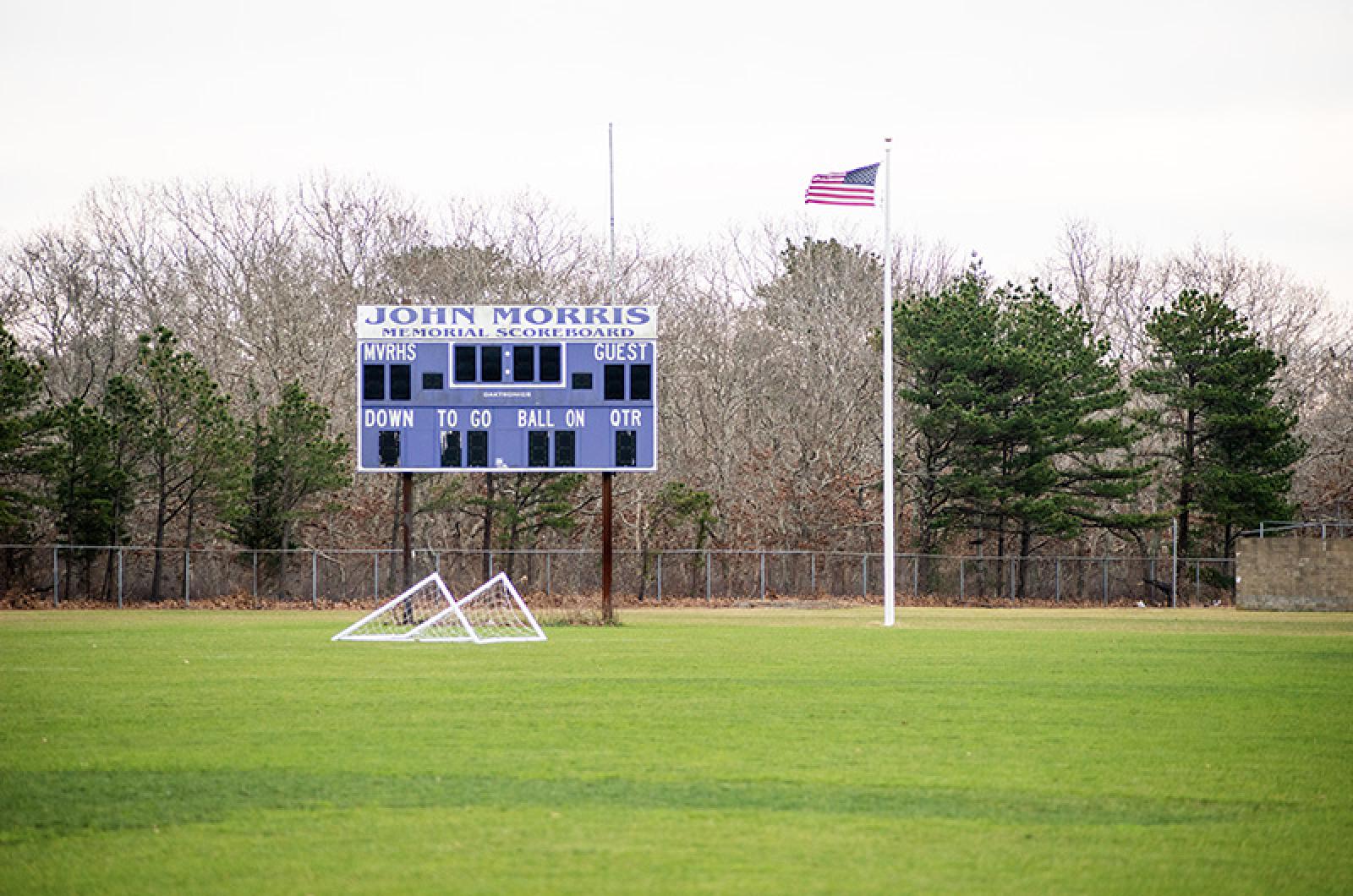A draft regulation that would ban artificial turf in Oak Bluffs is set for discussion by the town board of health Tuesday, adding another new wrinkle to the long-running and ongoing debate around a plan by the high school to overhaul its main athletic field using turf.
The controversial $7 million turf fields project at the high school was approved in a narrow vote by the Martha’s Vineyard Commission in August after months of public hearings. The project is currently under review at the town level by the Oak Bluffs planning board, which has not yet voted on it.
The three-page draft rule banning artificial turf out of concern for PFAS contamination was provided to the Gazette by the board of health, after it first surfaced as a meeting agenda item posted on town website Friday.
The discussion is set to take place at an online meeting Tuesday at 10 a.m.
If adopted, the regulation would ban the “installation, storage and dumping of artificial turf containing PFAS,” on all property in the town.
Speaking to the Gazette by phone Monday, town health agent Meegan Lancaster emphasized that the board will not vote on the draft regulation, and would call a public hearing before any vote.
“This isn’t a public hearing,” Ms. Lancaster said. “This is a conversation about a draft regulation.”
The health agent also said the board of health has been talking with school officials about the potential for a regulation restricting artificial turf, citing environmental concern about PFAS, a large group of widely-used, slow-decomposing chemicals.
In an email to the Gazette Monday, board of health member James Butterick said concerns about the turf field began around August.
“This issue with the artificial turf field came to the attention of the board of health late in the whole process, like August of this year,” Mr. Butterick wrote. “At issue is the content of the artificial turf, namely PFAS compounds, which are rapidly becoming a contamination issue of significance.”
As written, the draft regulation would ban turf containing PFAS. It would not ban PFAS-free turf, defined as containing less than one part per million total organic fluorine as measured by combustion ion chromatography.
Total organic fluorine, Ms. Lancaster explained, is a marker used to identify PFAS. It identifies a broad spectrum of substances, but no one specific PFAS substance.
“The problem is they don’t have specific tests for all of them,” Ms. Lancaster said.
She said the draft regulation, including its definition of PFAS-free, is subject to change. She said there are three possible options if the draft eventually comes to a vote — it could be adopted as-is, altered or completely thrown away. If the a ban on turf is approved, she said it would “likely” affect the plans at the high school.
“It’s a draft,” Ms. Lancaster said. “It’s not written in stone.”






Comments (14)
Comments
Comment policy »